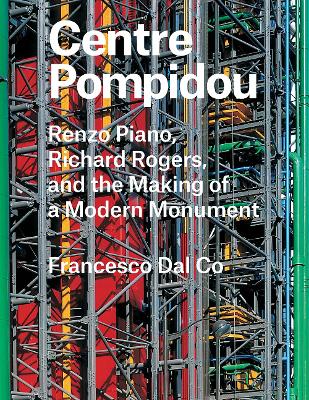Great Architects/Great Buildings
2 total works
The captivating tale of the plans and personalities behind one of New York City's most radical and recognizable buildings
Considered the crowning achievement of Frank Lloyd Wright (1867-1959), the Solomon R. Guggenheim Museum in Manhattan is often called iconic. But it is in fact iconoclastic, standing in stark contrast to the surrounding metropolis and setting a new standard for the postwar art museum. Commissioned to design the building in 1943 by the museum's founding curator, Baroness Hilla von Rebay, Wright established residence in the Plaza Hotel in order to oversee the project. Over the next 17 years, Wright continuously clashed with his clients over the cost and the design, a conflict that extended to the city of New York and its cultural establishment.
Against all odds, Wright held fast to his radical design concept of an inverted ziggurat and spiraling ramp, built with a continuous beam-a shape recalling the form of an hourglass. Construction was only completed in 1959, six months after Wright's death. The building's initial critical response ultimately gave way to near-universal admiration, as it came to be seen as an architectural masterpiece. This essential text, offering a behind-the-scenes story of the Guggenheim along with a careful reading of its architecture, is beautifully illustrated with more than 150 images, including plans, drawings, and rare photographs of the building under construction.
Considered the crowning achievement of Frank Lloyd Wright (1867-1959), the Solomon R. Guggenheim Museum in Manhattan is often called iconic. But it is in fact iconoclastic, standing in stark contrast to the surrounding metropolis and setting a new standard for the postwar art museum. Commissioned to design the building in 1943 by the museum's founding curator, Baroness Hilla von Rebay, Wright established residence in the Plaza Hotel in order to oversee the project. Over the next 17 years, Wright continuously clashed with his clients over the cost and the design, a conflict that extended to the city of New York and its cultural establishment.
Against all odds, Wright held fast to his radical design concept of an inverted ziggurat and spiraling ramp, built with a continuous beam-a shape recalling the form of an hourglass. Construction was only completed in 1959, six months after Wright's death. The building's initial critical response ultimately gave way to near-universal admiration, as it came to be seen as an architectural masterpiece. This essential text, offering a behind-the-scenes story of the Guggenheim along with a careful reading of its architecture, is beautifully illustrated with more than 150 images, including plans, drawings, and rare photographs of the building under construction.
A lively intellectual biography of one of the 20th century's most iconic buildings
The Centre Georges Pompidou, also called Beaubourg, is today considered an icon of contemporary Paris, the quintessence of a modern building, and a model for what a museum can be. In 1971, Renzo Piano and Richard Rogers, together with the engineering firm Ove Arup & Partners, won an international architecture competition with their innovative and irreverent design. Completed in 1977, the building was at first received skeptically by critics, yet it was quickly embraced by the public as a beloved monument of the modern city of Paris. This lively intellectual biography of the building explores its history and the reasons for its success, from its genesis as a politically calculated response to Paris's turbulent 1968 student protests to the role played by architects in its construction, as well as the historical influences and the engineering solutions that inform its design. A key reason for the Centre Pompidou's success indeed lies in its ability to channel architectural memory, connecting it powerfully to Paris's historic urban fabric. This essential text on one of the twentieth century's most significant buildings is accompanied by a portfolio of rare drawings and photographs.
The Centre Georges Pompidou, also called Beaubourg, is today considered an icon of contemporary Paris, the quintessence of a modern building, and a model for what a museum can be. In 1971, Renzo Piano and Richard Rogers, together with the engineering firm Ove Arup & Partners, won an international architecture competition with their innovative and irreverent design. Completed in 1977, the building was at first received skeptically by critics, yet it was quickly embraced by the public as a beloved monument of the modern city of Paris. This lively intellectual biography of the building explores its history and the reasons for its success, from its genesis as a politically calculated response to Paris's turbulent 1968 student protests to the role played by architects in its construction, as well as the historical influences and the engineering solutions that inform its design. A key reason for the Centre Pompidou's success indeed lies in its ability to channel architectural memory, connecting it powerfully to Paris's historic urban fabric. This essential text on one of the twentieth century's most significant buildings is accompanied by a portfolio of rare drawings and photographs.

